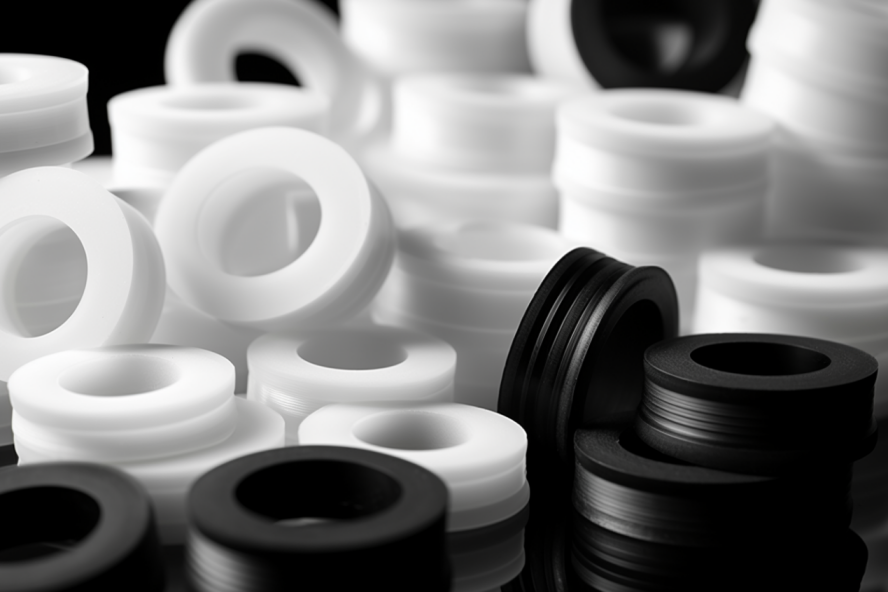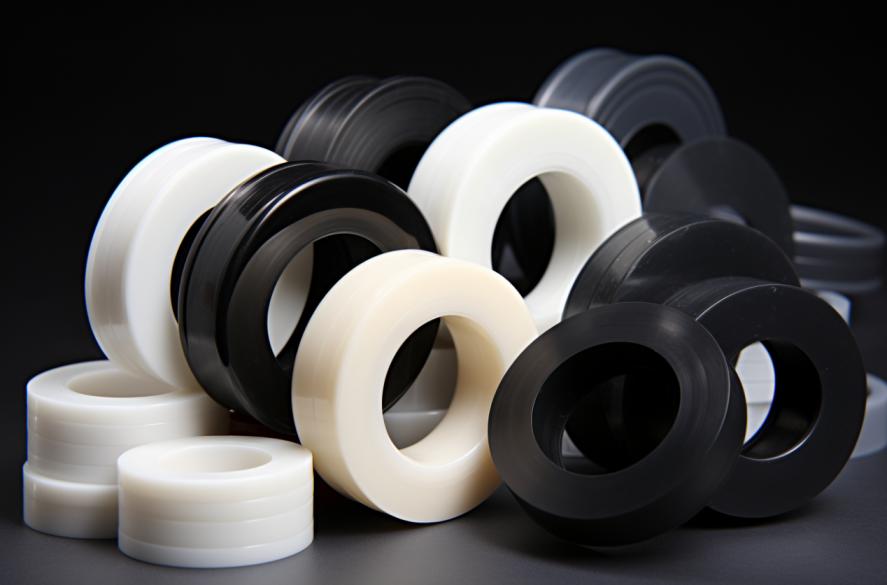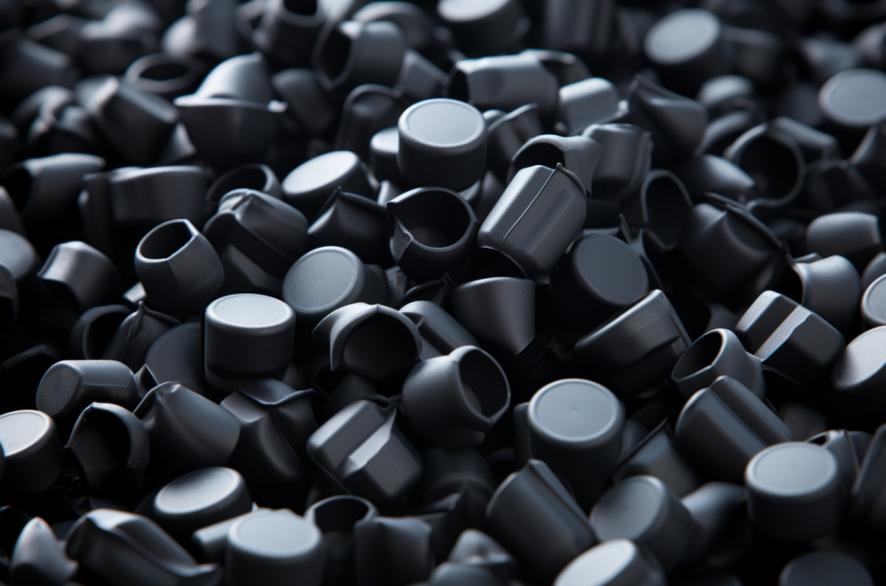Innovations in Synthetic Polyisoprene Rubber: Behind the Scene
24/05/2024
Explore the multifaceted realm of synthetic polyisoprene rubber, a top-tier elastomer celebrated for its unwavering consistency, longevity, and resilience against aging. Delve into its wide-ranging industrial uses and discover how industry leaders like CHEMBROAD are innovating the landscape of rubber technology.
Introduction to Synthetic Polyisoprene Rubber
1.1 Introduction
Synthetic polyisoprene rubber stands as a versatile elastomer, holding significant sway across various industrial realms. Derived from petroleum, it mimics the structure and properties of natural rubber while boasting enhanced consistency and resilience against aging and weathering.
1.2 Comparative Analysis
When juxtaposed with its natural counterpart, synthetic polyisoprene rubber displays notable similarities and distinctions. Both share comparable elasticity and durability, yet synthetic polyisoprene rubber outshines natural rubber in terms of uniformity and longevity.
1.3 Origin and Production
Manufactured by polymerizing isoprene monomers derived from petroleum, synthetic polyisoprene rubber emerges as a testament to human ingenuity and industrial prowess. Among the prominent manufacturers in this domain, CHEMBROAD leads the pack, leveraging cutting-edge techniques to craft high-quality synthetic polyisoprene rubber.
Manufacturing Process
2.1 Polymerization Process
The creation of synthetic polyisoprene rubber hinges upon a meticulous polymerization process. Isoprene monomers undergo polymerization, wherein they link together to form extended chains of rubber molecules, culminating in the formation of the desired synthetic polymer.
2.2 Key Steps
Key steps in the manufacturing process involve the conversion of isoprene monomers into rubber polymer chains. This intricate process demands precision and expertise, with each step contributing to the final product’s quality and performance.
2.3 Special Considerations
Special considerations and techniques are integral to the manufacturing process of synthetic polyisoprene rubber. Factors such as temperature, pressure, and catalysts play pivotal roles in controlling the polymerization reaction and ensuring the desired properties of the rubber.
Properties and Characteristics
3.1 Physical Properties
Synthetic polyisoprene rubber exhibits a range of physical properties, including excellent elasticity and resilience. Its molecular structure grants it the ability to deform under stress and return to its original shape upon release, making it ideal for applications requiring flexibility and durability.
3.2 Chemical Properties
Chemically, synthetic polyisoprene rubber shares many traits with natural rubber. However, its synthetic nature imparts enhanced stability and resistance to aging and weathering, ensuring prolonged service life even under harsh environmental conditions.
3.3 Comparison with Natural Rubber
While synthetic polyisoprene rubber mirrors the properties of natural rubber, it surpasses its natural counterpart in terms of consistency and uniformity. Moreover, its synthetic origin imbues it with greater resistance to degradation, making it a preferred choice in applications requiring long-term durability.
Industrial Applications
4.1 Diverse Usage
Synthetic polyisoprene rubber finds extensive use across a myriad of industries, owing to its versatile properties and performance. From automotive components to medical devices, its applications span a wide spectrum, illustrating its indispensability in modern manufacturing.
4.2 Examples of Applications
In automotive manufacturing, synthetic polyisoprene rubber serves as a key component in tire production, providing traction and durability on the road. In the healthcare sector, it finds use in surgical gloves and medical tubing, where its biocompatibility and elasticity are paramount.
4.3 Advantages in Applications
The advantages of using synthetic polyisoprene rubber in various applications are manifold. Its consistent quality and superior resistance to aging ensure reliability and longevity, while its versatility opens doors to innovation and efficiency across diverse industries.

Advantages Over Natural Rubber
5.1 Comparative Analysis
When comparing synthetic polyisoprene rubber with its natural counterpart, several distinctions become apparent. While both materials share similar elastic properties and chemical composition, synthetic polyisoprene rubber offers advantages in terms of consistency, quality, and durability.
5.1 Consistent Quality
One of the primary advantages of it is its consistent quality. Unlike natural rubber, which can vary in composition and properties depending on factors like climate and soil conditions, it is manufactured under controlled conditions, ensuring uniformity and predictability in its performance.
5.3 Improved Resistance
Synthetic polyisoprene rubber also boasts superior resistance to aging and weathering compared to natural rubber. This enhanced durability makes it well-suited for applications where prolonged exposure to harsh environmental conditions is expected, such as outdoor equipment, automotive components, and industrial seals.
5.4 Drawbacks and Limitations
Despite its many advantages, it does have some drawbacks compared to natural rubber. One limitation is its higher production cost, as the manufacturing process involves complex chemical synthesis and specialized equipment. Additionally, some purists argue that natural rubber maintains a more authentic and sustainable appeal, being sourced directly from rubber trees.
The Current Market Status of Synthetic Polyisoprene Rubber
6.1 Overview
Synthetic polyisoprene rubber stands at the forefront of the elastomer industry, with a growing demand across various sectors worldwide. As industries continue to seek high-performance materials with consistent quality, synthetic polyisoprene rubber emerges as a preferred choice, offering a myriad of applications and benefits.
6.2 Growing Demand
In recent years, the demand for it has seen a steady rise, driven by factors such as increasing industrialization, automotive production, and advancements in healthcare technologies. Industries ranging from automotive and aerospace to medical and consumer goods rely on synthetic polyisoprene rubber for its superior properties and versatility.
6.3 Market Needs
With the expanding scope of applications for synthetic polyisoprene rubber, the market demands solutions that address specific requirements and challenges. Key needs include enhanced durability, improved processing efficiency, sustainable production methods, and tailored formulations to meet diverse application needs across industries.
Meeting Market Needs: Solutions from CHEMBROAD
7.1 Innovative Formulations
As a leading manufacturer of synthetic polyisoprene rubber, CHEMBROAD is committed to meeting the evolving needs of the market through innovative formulations. By leveraging cutting-edge research and development capabilities, CHEMBROAD develops customized rubber compounds tailored to the unique specifications and performance requirements of various applications.

7.2 Sustainable Production Practices
In response to growing environmental concerns, CHEMBROAD prioritizes sustainable production practices to minimize the ecological footprint of synthetic polyisoprene rubber manufacturing. Through initiatives such as resource optimization, energy efficiency, and waste reduction, CHEMBROAD strives to minimize environmental impact while delivering high-quality rubber products to the market.
7.3 Advanced Processing Technologies
CHEMBROAD invests in advanced processing technologies to enhance the efficiency and reliability of synthetic polyisoprene rubber production. By optimizing manufacturing processes and adopting state-of-the-art equipment, CHEMBROAD ensures consistent product quality, shorter lead times, and increased production capacity to meet the demands of a dynamic market.
Future Trends and Developments
8.1 Ongoing Research
In the field of synthetic polyisoprene rubber, ongoing research aims to further enhance its properties and expand its range of applications. Scientists and engineers are exploring new formulations and additives to improve aspects such as tensile strength, tear resistance, and heat resistance.
8.2 Advancements in Manufacturing
Advancements in manufacturing processes hold the potential to revolutionize the production of it. Innovations in catalysts, polymerization techniques, and recycling methods could lead to more efficient and sustainable processes, reducing production costs and environmental impact.
8.3 Potential Applications
Looking ahead, the use of it is poised to evolve in response to changing market demands and technological advancements. Potential applications include advanced medical devices, high-performance tires, sustainable packaging materials, and novel composite materials for aerospace and construction industries.

Conclusion
In conclusion, it stands as a testament to human innovation and industrial prowess. From its inception in the petrochemical industry to its myriad applications in modern manufacturing, it continues to play a pivotal role in shaping our technological landscape. With manufacturers like CHEMBROAD at the helm, the future of holds promise for continued growth and innovation.




